
Latest Inventions in Botany For 2018: Botany is even more fascinating now than it used to be in previous centuries. Metabolomics, genomics, and transcriptomics show us the complicated way these organisms’ function and respond to the environment.
The discoveries made in 2018 showcase how little we still know about them – and how much more are we going to learn!
Table of Contents
- 1. Genes that turn legumes into Jumbo-like Plants
- 2. Studying the intricacies of Photosynthesis on the enzyme level
- 3. miRNAs control flowers
- 4. Validation for herbal medicine
- 5. Plant extracts found to be effective Fungicides
- 6. Female flowers found more resistant to certain fungal infections
- 7. Network of genes that controls petal senescence was discovered
- 8. Silicone as a plant protector
- 9. Metabolomics shows the unseen differences in a popular plant
- 10. Novel Genetics-based approach to optimize crop production
- 11. Auxin triggers a specific pathway in palm oil plants
- 12. Tracing the evolutionary history of an amazing plant group
- 13. Novel grafting approaches offered to help pepper plants
- 14. Unexpected benefits of wet leaves
- 15. Cognition in plants is real
1. Genes that turn legumes into Jumbo-like Plants
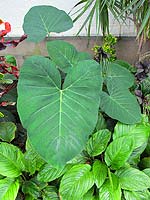 A team of researchers has found two mutants in pea plants that had significantly bigger organs and symmetrical flower petals.
A team of researchers has found two mutants in pea plants that had significantly bigger organs and symmetrical flower petals.
- In one of the mutants, leaves even resembled elephant ears. The genetic analysis of the new mutants has revealed that the genes responsible for such mutations – BIO and ELE1 – interact both with each other and transcription factors responsible for organ growth.
- This discovery adds to our understanding of how the plants manage to grow.
![]()
2. Studying the intricacies of Photosynthesis on the enzyme level
 RuBiSco is considered one of the most abundant enzymes of Earth.
RuBiSco is considered one of the most abundant enzymes of Earth.
- It is engaged in the first stage of carbon fixation in plant photosynthesis. Using modern techniques, the researchers have studied the activity of this enzyme in Arabidopsis thaliana in response to different temperature regimens.
- By understanding the relationship between temperatures and RuBiSco, the adjustments aimed at better crop growth and production can be made.
![]()
3. miRNAs control flowers
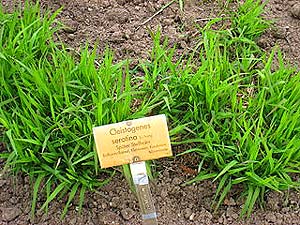 In a plant called Cleistogenes songorica, one can find two types of flowers: some of them are located at the top, while others are embedded in the leaf sheath.
In a plant called Cleistogenes songorica, one can find two types of flowers: some of them are located at the top, while others are embedded in the leaf sheath.
- The researchers got interested in the mechanism behind the development of these two flower types.
- It was found that different aspects of flower growth and development, such as the development of the parts of the flower (anther, petals, stigma, etc.), are controlled by various microRNAs – a class of RNA molecules involved in gene control.
![]()
4. Validation for herbal medicine
 Herbal medicine is still widely used around the world. In rural areas of some countries, such as Pakistan, herbal remedies can sometimes be the only treatments available.
Herbal medicine is still widely used around the world. In rural areas of some countries, such as Pakistan, herbal remedies can sometimes be the only treatments available.
- A study done by local researchers focused on local gynecological herbal-based remedies has shown that some plants used for the treatment of different complaints, including menses disorders and honorrhea, can be useful from pharmacological points of view.
- Local plants of Asteraceae and Amaranthaceae families were shown to be the most effective.
![]()
5. Plant extracts found to be effective Fungicides
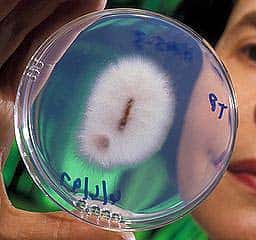 Castor oil plants have several important uses in medicines. However, they have their own diseases, mainly wilt, caused by a fungal species, Fusarium oxysporum.
Castor oil plants have several important uses in medicines. However, they have their own diseases, mainly wilt, caused by a fungal species, Fusarium oxysporum.
- Previously, toxic fungicides were used as protection against this disease. However, the researchers have found an alternative-plant extract.
- Such common plants as henna, neem cake, and aloe extracts were found to be highly effective at killing fungal cells.
- Now the researchers plan to study these plants further, in order to develop better methods of protection against fungal infections.
![]()
6. Female flowers found more resistant to certain fungal infections
 By using an alpine plant that has both hermaphroditic and female flowers, researchers have tried to find out what has driven the evolution towards separate female plants development.
By using an alpine plant that has both hermaphroditic and female flowers, researchers have tried to find out what has driven the evolution towards separate female plants development.
- It was found that female plants were more resistant to certain types of fungal diseases.
- Based on the research results, it was proposed that dioecious plants may have developed in conditions where fungal diseases were prevalent, and resistance to them was crucial for survival.
![]()
7. Network of genes that controls petal senescence was discovered
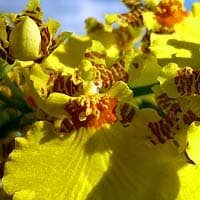 A team of scientists has attempted to describe the falling of petals in terms of genes instead of poetry.
A team of scientists has attempted to describe the falling of petals in terms of genes instead of poetry.
- They tracked the changes in the transcriptome of Oncidium orchid petals in the course of their development.
- It was found that the shift to petal senescence was controlled by a complex gene network including genes responsible for circadian rhythms as well as some plant hormones genes, including gibberellin, brassinosteroid, and salicylic acid, as well as some signaling cascades.
![]()
8. Silicone as a plant protector
 Silicone has not been previously considered an essential element for higher plants.
Silicone has not been previously considered an essential element for higher plants.
- However, mounting evidence shows that plants do absorb this element. Moreover, modern transcriptomics has revealed the crucial importance of this element in stressful conditions.
- Based on new research done in 2018, it was shown that though silicone does not alter gene expression in plants in a regular environment, its role changes when the plants are under biotic stress.
- For instance, Si supplementation is necessary to counteract damage in plants growing in conditions with high salt content.
![]()
9. Metabolomics shows the unseen differences in a popular plant
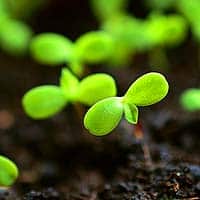 A unique study was carried out in Denmark. The researchers undertook a broad metabolic analysis of 15 different populations of broadleaf plantains, Plantago major, that came from different areas of the country.
A unique study was carried out in Denmark. The researchers undertook a broad metabolic analysis of 15 different populations of broadleaf plantains, Plantago major, that came from different areas of the country.
- This study has shown that the metabolomes of the plants significantly differed depending on the location, as soil pH, the presence of herbivores, light levels and other parameters all influenced the number of metabolites.
- Potentially, many inferences about the plant growth conditions and even geographic location can be made based on the features of their metabolism.
![]()
10. Novel Genetics-based approach to optimize crop production
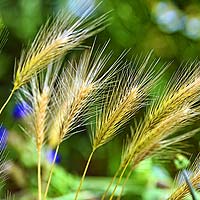 Phosphorus (P) is a crucial element for plants. In the case of P deficiency, root development and architecture can be heavily impaired.
Phosphorus (P) is a crucial element for plants. In the case of P deficiency, root development and architecture can be heavily impaired.
- That is why most crops are dependent on phosphorus fertilizers, but their overuse is dangerous.
- It is now possible to identify genetic loci in plants that are responsible for efficient P absorption.
- By monitoring and selecting for these loci, it is possible to improve overall yield in crops, as well as evade overuse of fertilizers.
![]()
11. Auxin triggers a specific pathway in palm oil plants
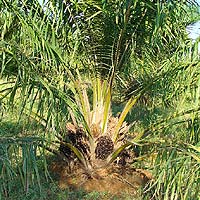 In oil palm cultivation, the fruit developed without fertilization (parthenocarpic) is the most economically advantageous, as they contain the highest palm oil percentage.
In oil palm cultivation, the fruit developed without fertilization (parthenocarpic) is the most economically advantageous, as they contain the highest palm oil percentage.
- It was found that auxin treatment before the opening of the flower stigmas could induce 100% development of parthenocarpic plants.
- It was also found that auxin triggered a certain genetic pathway that eventually led to the development of parthenocarpic fruit.
- The researchers hope that more research would lead to a better understanding of the parthenocarpic mode of development.
![]()
12. Tracing the evolutionary history of an amazing plant group
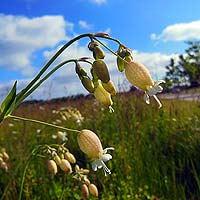 Caryophyllales is an order of higher plants that exhibit a fantastic variety of adaptations.
Caryophyllales is an order of higher plants that exhibit a fantastic variety of adaptations.
- This group contains species with extreme heat tolerance (such as cacti), carnivorous plants (Venus flytrap) and even plants able to accumulate heavy metals.
- The genome-wide transcriptomic analysis allowed the researchers to understand the relationships between such diverse species better and gain better insight into the evolution of such diverse adaptations.
![]()
13. Novel grafting approaches offered to help pepper plants
 Pepper, among other important crop plants, suffers greatly from the worsening of environmental conditions.
Pepper, among other important crop plants, suffers greatly from the worsening of environmental conditions.
- The higher salinity of the soils and water shortages are especially concerning.
- In order to overcome these challenges, novel grafting techniques aimed at helping plants overcome stress, are being developed.
![]()
14. Unexpected benefits of wet leaves
 Many decorative plants owners know the importance of leaf wetting. Now it gets the scientific basis.
Many decorative plants owners know the importance of leaf wetting. Now it gets the scientific basis.
- Extensive evidence shows that leaf wetting significantly improves the efficiency of photosynthesis, plant growth and leads to other advantages both for the leaves themselves and plants as a whole.
- Leaf wetting may become an important practice in crop plant growth, considering the complications brought by climate change.
![]()
15. Cognition in plants is real
 The knowledgeable, intellectual trees of fantasy may be the objects of fiction.
The knowledgeable, intellectual trees of fantasy may be the objects of fiction.
- Still, the mounting evidence suggests that plants actually have cognition quite similar to animals.
- They can react and adapt to stimuli in the same basic way animals do, though the types of reactions are different.
- These newly discovered cognition processes are at present are of highest interest to plant neurobiologists.
![]()
As you can see, botany in 2018 was far from the stale science it is sometimes viewed.
We continue to be highly dependent on plants, as they provide us with food, medicine and even novel questions about life itself and our place in the world.
![]()























Great information